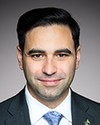Part of the response that Anne Kelly gave is that we try to address all of these factors through programming and interventions. We continue to do research on how we can accelerate the progress of these programs and cascade them down to lower security.
Again, much of our assessments are highly individualized, as opposed to being for a member of a particular group. If a particular offender is indigenous and finds himself or herself placed in maximum security for reasons of safety and security as well as risk to the public or risk of escape, we would look towards bringing that classification down through interventions that target a variety of factors that would contribute towards that happening.
Again, it's difficult to generalize to whole groups, but nevertheless, for individuals who do show progress.... We conduct ongoing research on these kinds of things in terms of whether there are other kinds of considerations that we should be looking into in terms of bringing down that classification or mitigating the risk that they would pose in lower security. We do that kind of work.
We do know that what brings them into custody from the beginning are often expressions of violent behaviour. We need to grapple with that upon admission and in placement. We strive to intervene on those factors and mitigate those risks, whether they're a member of a gang or not.
Again, the efforts that are put forward to address and mitigate those risks are extensive in our correctional process.





